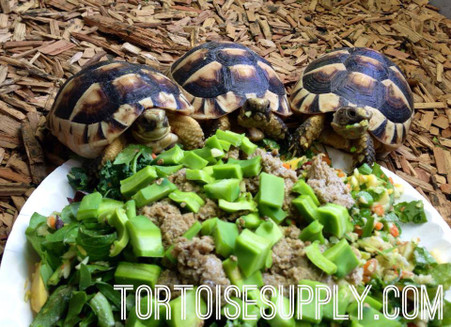- Home
- Tortoises For Sale
- Marginated Tortoises For Sale
- Juvenile Marginated Tortoise
- Home
- Tortoises For Sale
- Pet Tortoises For Sale - 4" Size or Larger
- Juvenile Marginated Tortoise
Juvenile Marginated Tortoise
Out of Stock
Product Reviews
Description
Common Name: Marginated Tortoise
Scientific Name: Testudo Marginata
Current Size: 4"+
Average Adult Size: 10-12"
Area of Origin: Greece
Description: Light brown color with brown to black bands around each scute of the shell. These pretty tortoises are similar in look to Hermanns tortoises, with generally a lighter overall color, and a light beige head instead of the darker heads that other Testudo have. The rear of the shell "flares" out when they reach adulthood. This is the largest of the Testudo (European) tortoises, and most think it is the most beautiful.
Habitat: Mediterranean tortoises, these animals live in rocky hillsides and scrubland where they come and go from their burrows in order to maintain the ideal temperatures. They do hibernate naturally, and will hibernate in captivity if proper conditions are given. As adults, they can safely handle body temperatures as low as 35 degrees during hibernation, and on cold spring, summer or fall months, they will retreat underground to maintain some warmth. Summer highs up to 110 degrees can be tolerated as long as there is a cooler, underground retreat the tortoise can get into. In hot climates, they will spend much of the summer days in burrows or simply buried under an inch or two of earth.
Diet: This tortoise is naturally a browser, eating broadleaf weeds and low leaves from bushes and shrubs. In captivity, Hermanns tortoises will graze on leafy weeds, dandelion, clover, and most other leafy greens provided to them. As babies, we focus more on feeding them a wide mix of leafy greens (spring mix). Vegetables can be added to the diet for variety, but fruit should generally be avoided or given as no more than 5-10% of the diet.
Adult Behavior: Adult marginated tortoises are active, busy tortoises when the temperatures are in their ideal ranges (60-85 degrees). They can be somewhat aggressive towards eachother particularly during breeding season (spring), but usually can be kept in small groups without any major problems. Most will eagerly come to their keepers looking for food once they are comfortable in their environments. They are good climbers and will make attempts to escape, so perimeter fences should be buried at least 6-12" underground, and sidewalls 16" above ground will normally contain them.
Note: These are captive bred in the US marginated tortoises, nearing 3 years old. These animals appear to be male.
 Loading... Please wait...
Loading... Please wait...

